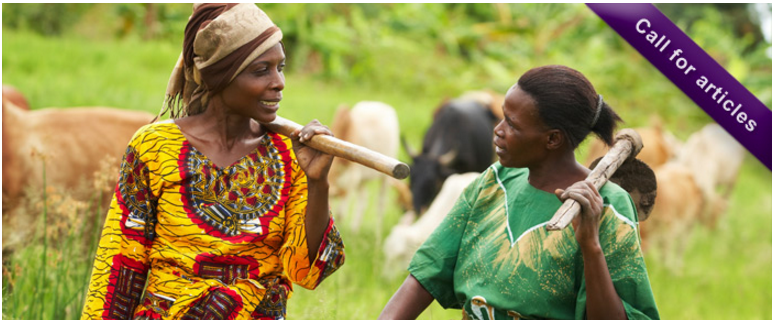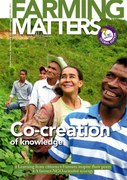The September issue of Farming Matters will explore how to better prove the effectivenes of agroecology. Agriculture and the rural world perform important roles in addressing the multiple crises of today: hunger and malnutrition, poverty, climate change, environmental degradation, loss of biodiversity, water, gender inequity and health. The Sustainable Development Goals, recently endorsed by the United Nations, explicitly mention the need to transform our current input heavy food systems in order to make them more sustainable and contribute to solving these global challenges.
There is ample evidence that agroecology driven by family farmers can contribute to addressing these challenges in an integrated way. But why is it continuing to be difficult to ‘prove’ the effectiveness of agroecological practices?
One challenge is that farmers’ indicators or criteria to judge the effectiveness of agricultural practices differ from those of mainstream policy makers and scientists. The dominant agricultural paradigm sees the maximisation of yields of single crops as a key indicator of effective agriculture. But family farmers may use several additional criteria, in line with the multifunctionality of their farming system. Innovative farmers continuously assess the effectiveness of their farming practices, because they want to know the added value of new practices compared to what they were doing earlier, or to what others are doing. They carefully observe their crops and their animals to assess the resilience of their system. They may ‘read’ their farm’s resilience by observing changes in biodiversity, nutritional value, income and risk diversification, health, labour quality and general quality of life.
Because of this discrepancy in indicators it can be challenging to convince scientists, policymakers and other farmers about the effectiveness of agroecological practices. The September issue of Farming Matters seeks to bridge these differences and contribute to a new perspective on indicators for agroecology’s multifunctional contributions to society.
What (additional) indicators are family farmers using to assess the effectiveness of agroecology at the farm, landscape and community level? And which indicators are emerging at the aggregate level to assess the multifunctional benefits for agroecology to society at large? How can we show the contributions of agroecology to the Sustainable Development Goals? What are the challenges when demonstrating the impact of agroecology, and how are these challenges overcome? How can we demonstrate in a convincing way the crucial role agroecology can play in responding to the crises of our time? What can we learn from existing practices?
We invite you, our readers, to share your experiences. Articles for the September issue of Farming Matters should be submitted before 1 June 2016.
Read our guide for authors



